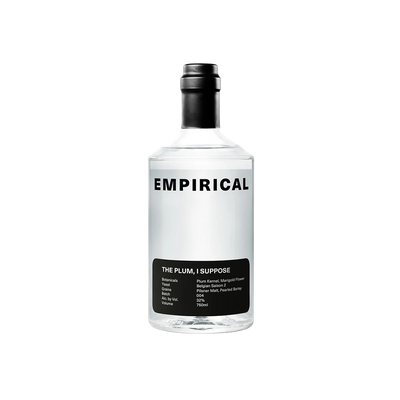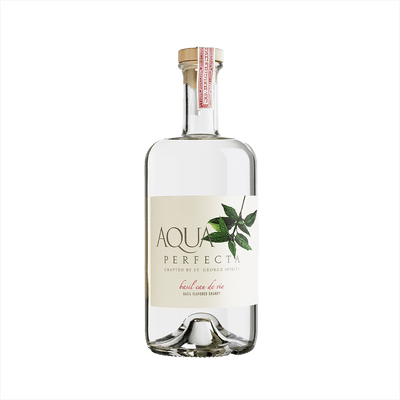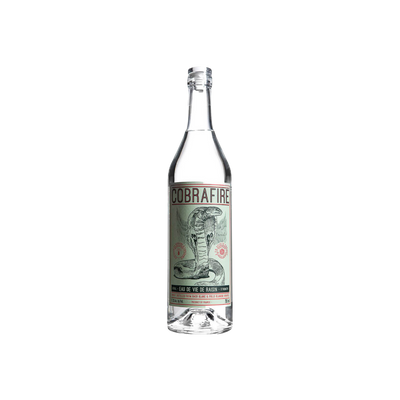Eau de Vie
What is Eau de Vie?
Eau de vie represents a distinct category within Brandy & Cognac that translates literally to "water of life" in French. Unlike aged brandies that develop color and complexity from barrel contact, eau de vie maintains crystal clarity through careful distillation of fermented fruit without wood aging. This transparent spirit captures the pure, concentrated essence of its source fruit—whether pears, apples, cherries, or exotic varieties—delivering an intensely aromatic and flavorful expression that showcases the distiller's skill in preserving nature's original character.
Learn More About Eau de Vie
What makes Eau de Vie unique?
Eau de vie stands apart from other brandies and cognacs because it's an unaged, crystal-clear spirit that captures the pure essence of its fruit without any influence from wood barrels. While cognac and other aged brandies develop complex flavors through years of oak contact, eau de vie preserves the bright, concentrated character of fresh fruit like pears, plums, or berries in distilled form. This French "water of life" requires exceptional fruit quality and precise distillation techniques since there's nowhere to hide imperfections behind barrel aging or blending.
How is Eau de Vie made?
Eau de vie starts with fresh fruit that's fermented into a low-alcohol wash, then distilled in copper pot stills to capture the pure essence of the original ingredient. The distillation happens at relatively low temperatures to preserve delicate fruit flavors, and most eau de vie is bottled without aging to maintain that bright, clean fruit character. The result is a crystal-clear spirit that tastes like concentrated fruit in liquid form.
How do you drink Eau de Vie?
Eau de vie shines brightest when sipped neat at room temperature in small tulip-shaped glasses, allowing its pure fruit essence to unfold without dilution or distraction. While some bartenders incorporate these clear fruit brandies into sophisticated cocktails—think white Negronis with pear eau de vie or elegant spritzes with plum brandy—the traditional approach treats them as digestifs meant for slow, contemplative sipping. The clean, intense flavors make eau de vie perfect for cool autumn evenings when orchard fruits are at their peak, or as a palate-cleansing finale to rich winter meals.
How do a choose a good Eau de Vie?
When selecting an eau de vie, start by considering the fruit base that appeals to you most—pear Williams will offer delicate floral notes, while kirsch brings bold cherry intensity, and framboise delivers concentrated raspberry essence. For cocktails, choose clearer, more neutral expressions that won't muddy your drink's balance, saving the intensely aromatic, aged bottles for sipping neat or as a finishing touch. Match the strength of your eau de vie to your cocktail's other components: delicate pear works beautifully in light, gin-based drinks, while robust plum or apple varieties can stand up to whiskey or brandy cocktails.
Nutritional Information
Typical Calorie Range per Ounce: 64-70 calories
Typical Carbohydrate Range per Ounce: 0-0.1 grams
Typical Sugar Range per Ounce: 0 grams
Typically Gluten Free: Yes
Most eau de vie is naturally gluten-free since it's distilled from fruits rather than grains. The distillation process removes gluten proteins even when grain-based spirits are involved. That said, always check the specific product label and manufacturer information to confirm gluten-free status, especially if you have celiac disease or severe gluten sensitivity. Some producers may use additives or processing methods that could introduce gluten cross-contamination.
Scrolled this far? Your reward? Eau de Vie Trivia!
- The name literally translates to "water of life," but here's the twist: medieval alchemists actually believed these clear fruit brandies could extend human lifespan. They weren't completely wrong – the distillation process they developed became the foundation for modern pharmaceuticals and perfumes. Those old-school scientists were basically creating medicine in a bottle, one pear at a time.
- Traditional poire Williams (pear eau de vie) bottles often contain a whole pear inside, and no, they don't stuff it through the neck. Crafty producers slip empty bottles over tiny pear buds while they're still on the tree, letting the fruit grow to full size inside the glass. The pear becomes a prisoner of its own making, creating one of the most Instagram-worthy spirits on earth.
- Kirsch, the cherry eau de vie, was once considered so valuable that it served as currency in parts of the Black Forest region. During the 1800s, German farmers would trade bottles of their homemade kirsch for everything from tools to livestock. Some villages even had official "kirsch banks" where the spirit was stored like gold reserves.
- Master distillers can identify the exact variety of apple used in Calvados or apple eau de vie just by smell – even distinguishing between fruit picked from different sides of the same tree. The sun exposure creates subtle chemical differences that show up in the final spirit. It's like wine terroir, but for fruit brandy, and these experts have noses more sensitive than sommelier superpowers.
- Framboise (raspberry eau de vie) requires roughly 30 pounds of raspberries to produce just one bottle. That's about 15,000 individual berries for a single 750ml bottle, making it more concentrated than most perfumes. The ridiculous fruit-to-bottle ratio explains why good eau de vie costs more per ounce than some single malt whiskies.
Higher-proof spirits can be intense. Mix carefully, taste thoughtfully, and enjoy responsibly.
Gift message (optional)





